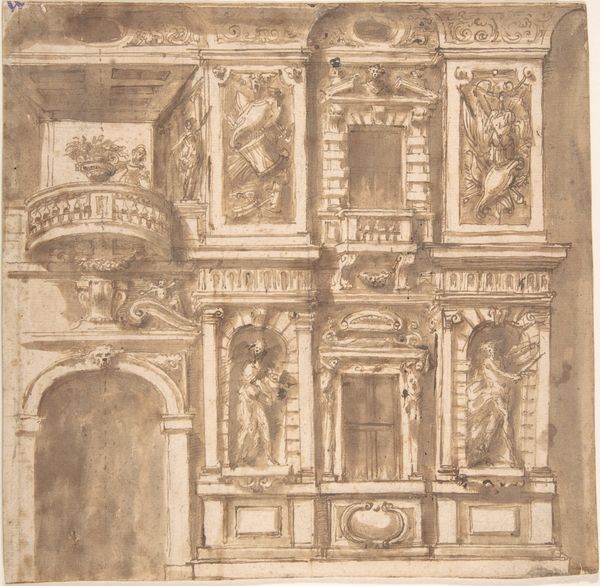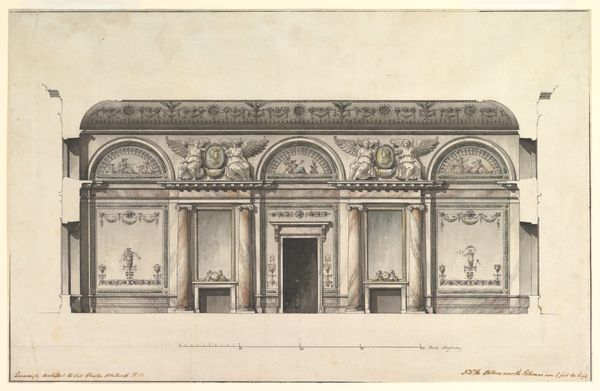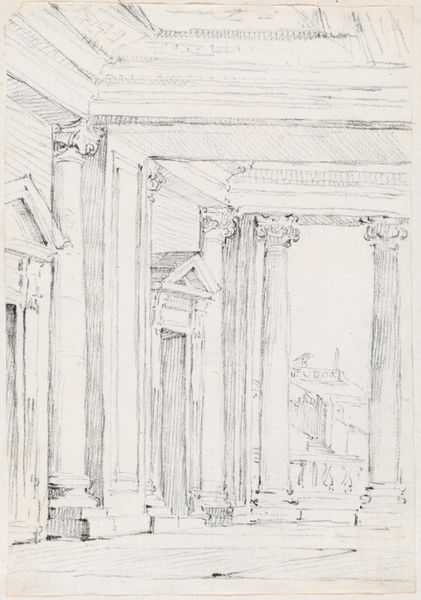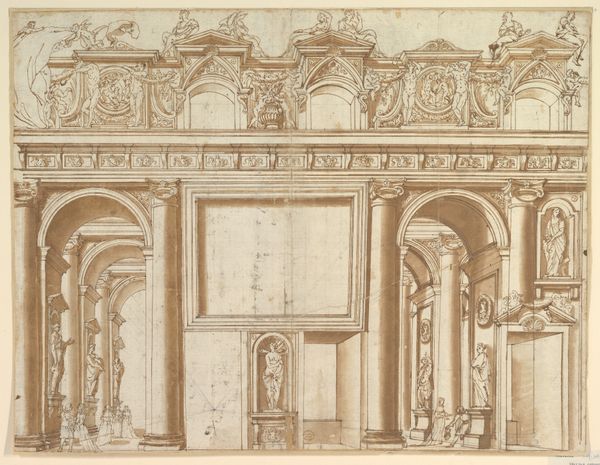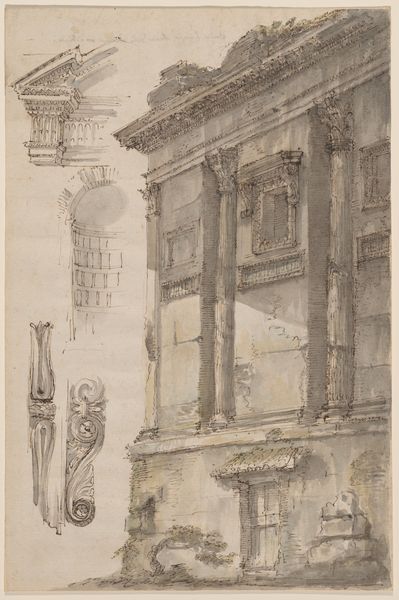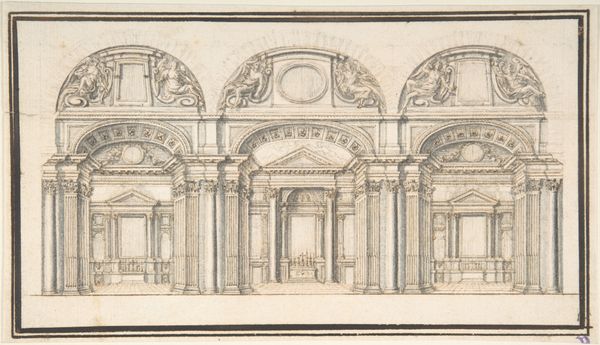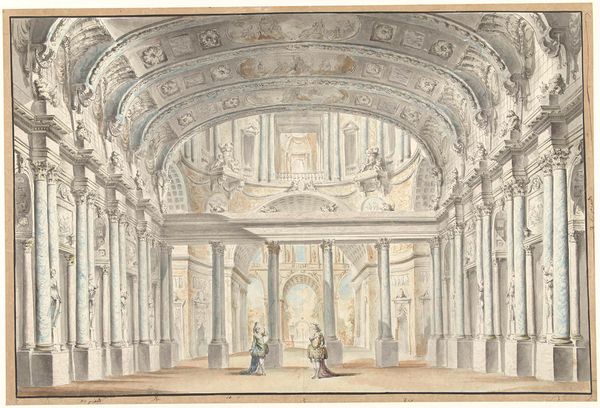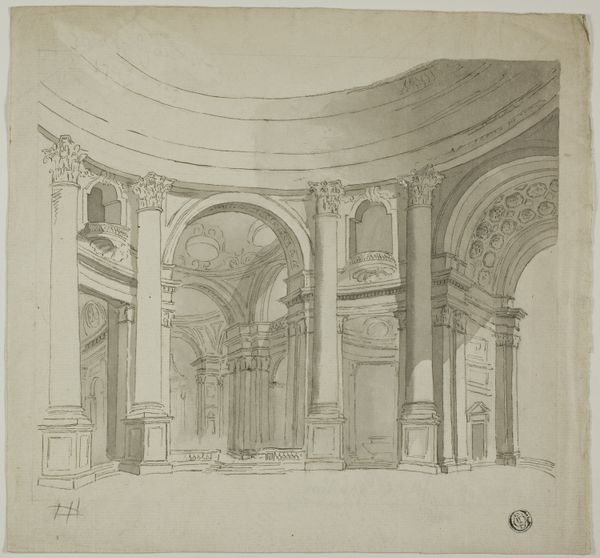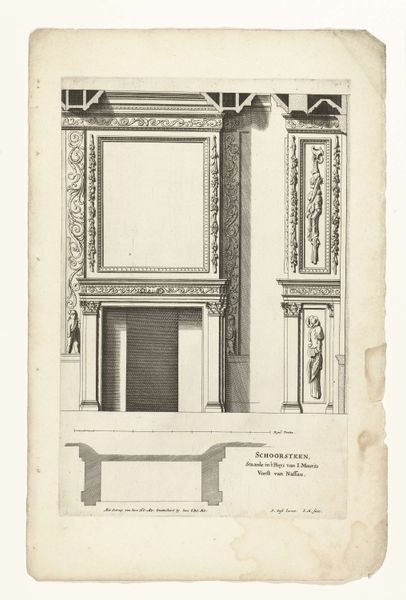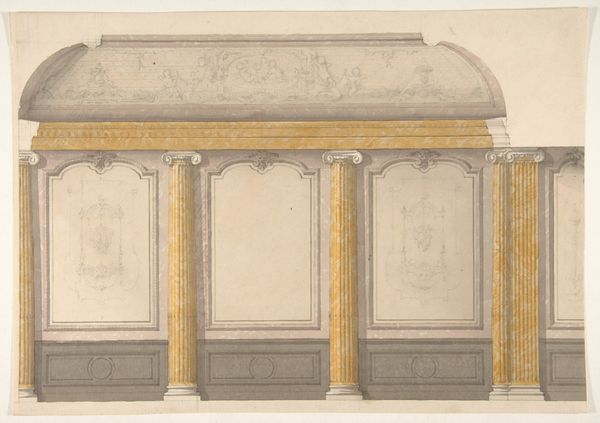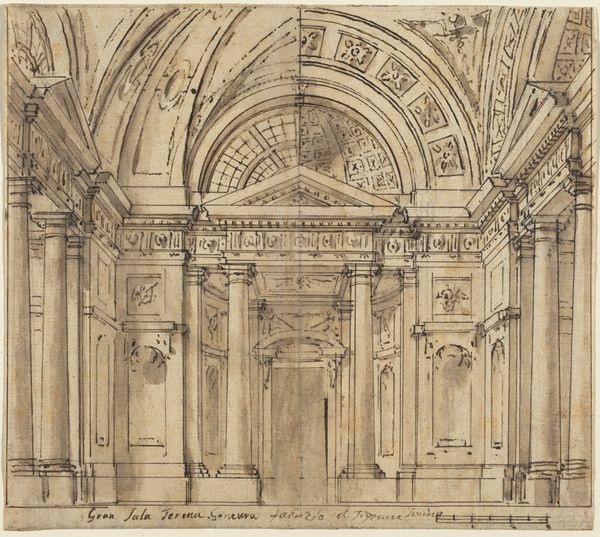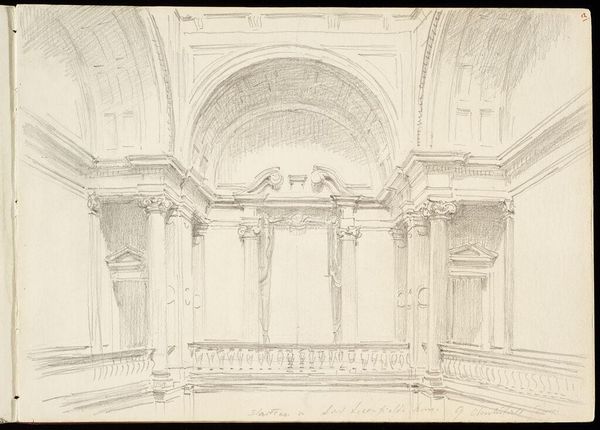
Stage Design- Proposals A and B for a Drawing Room c. 1790
0:00
0:00
drawing, watercolor, architecture
#
drawing
#
neoclacissism
#
landscape
#
etching
#
watercolor
#
classicism
#
italy
#
watercolor
#
architecture
Dimensions: 6 1/2 x 8 3/8 in. (16.51 x 21.27 cm) (sheet)
Copyright: Public Domain
Curator: This is Bernardino Galliari's "Stage Design- Proposals A and B for a Drawing Room," created around 1790. It's currently held here at the Minneapolis Institute of Art, an evocative watercolor and etching drawing, would you agree? Editor: It has this hushed, expectant atmosphere. There is so much theatrical tension in this tentative, almost haunted stage design. The restricted palette feels almost ghostly. Curator: Indeed, it reflects a period deeply engrossed with classical themes. You can discern neoclassical elements throughout, with its ordered symmetry and architectural details referencing ancient Roman aesthetics. Consider the implications: a return to these forms signified order, reason, and, in a way, a rejection of the frivolous Baroque preceding it. Editor: And Galliari was designing for the stage during a highly transformative period, wasn't he? It feels connected to this burgeoning fascination with historical revivals and a certain yearning for some kind of bygone elegance. Though, I also wonder how these stage designs shaped and mirrored the social hierarchies of his time. The theater was such a loaded social space. Curator: Absolutely. The precise rendering serves to underscore the importance of spectacle and the staged portrayal of societal ideals. Notice how, through careful lighting and compositional balance, Galliari draws the viewer into an idealized, yet sterile world. The architectural symbols used throughout hold weight. Columns speak to fortitude, busts reflect the veneration of thought and reason. Editor: Yet the limited color palette tempers some of that grandiosity, lending the work this undercurrent of, almost, vulnerability. In our contemporary context, doesn't it also make us question the constructed nature of identity and power these kinds of settings enable? How can design contribute to perpetuating systems? Curator: Well put! Considering our cultural memory, these motifs tap into enduring ideas of strength and refinement. They have outlasted countless changes to represent something timeless about the human longing for balance. Editor: It really captures something ephemeral, especially knowing it’s only a design – a possibility of a space. It becomes like an imprint of history that sparks dialogues. Curator: Precisely! The drawing carries layers. Looking closely helps reveal insights into its time. Editor: Definitely. It makes you look differently at theater through time, and how performance intersects with power.
Comments
No comments
Be the first to comment and join the conversation on the ultimate creative platform.
